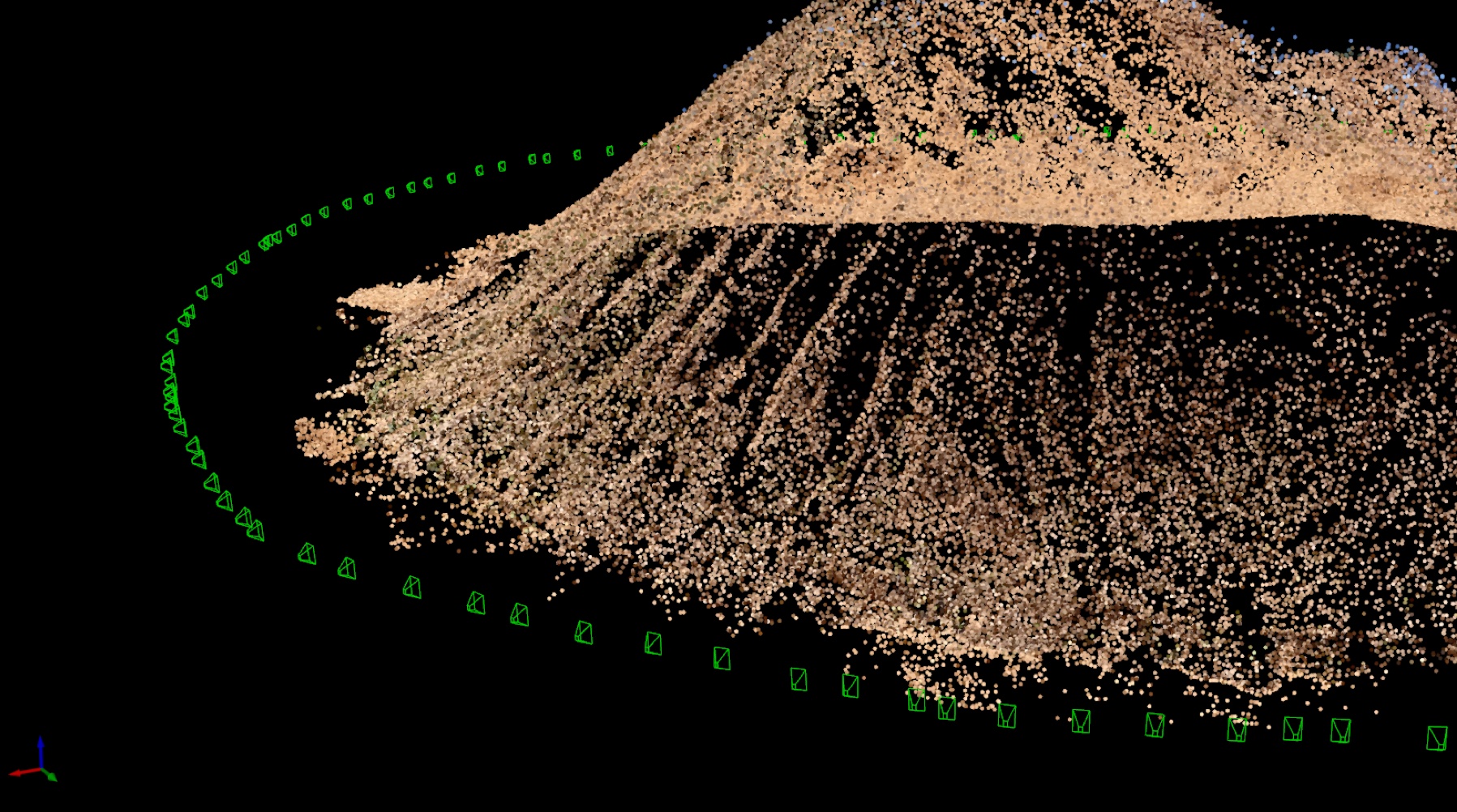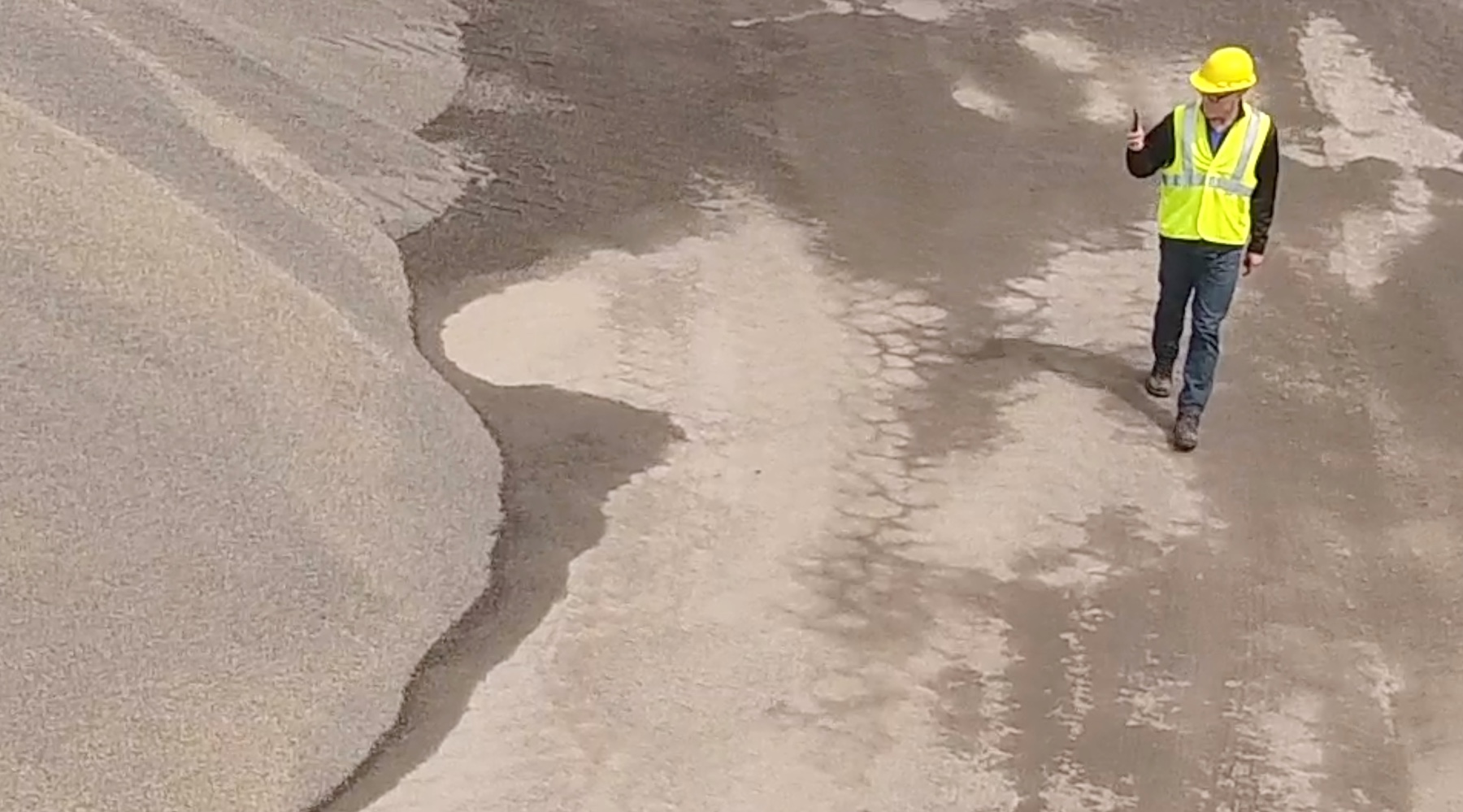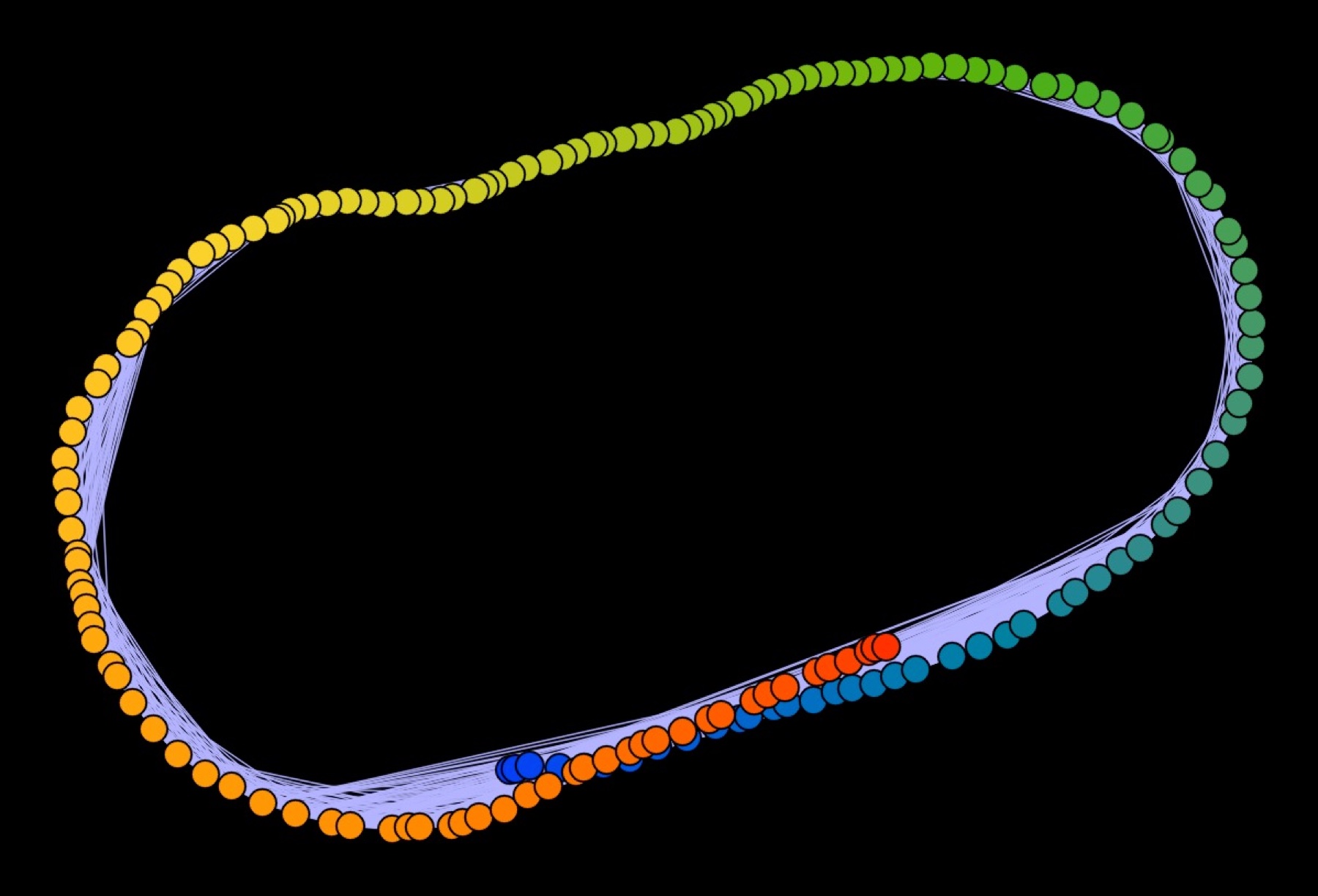Measuring stockpiles using image-based 3D reconstruction
 Measuring stockpiles of material has traditionally taken considerable time, money and effort. Accurate measurement reports are crucial to finance and accounting – and getting it wrong can mean money lost, unaccounted for, or written off. It can even lead to disputes and a long, costly road to resolution.
Measuring stockpiles of material has traditionally taken considerable time, money and effort. Accurate measurement reports are crucial to finance and accounting – and getting it wrong can mean money lost, unaccounted for, or written off. It can even lead to disputes and a long, costly road to resolution.
Traditional surveying and measurement teams, which can take time and cost significant amounts, use techniques such as drilling into stockpiles and LiDAR laser measurement equipment to gauge the volume of material. However, iPhone technology has delivered a solution for civil engineers, builders and the wider aggregate industry.
Any stockpile can now be quantified by using the Stockpile Reports Lite iPhone app. It allows professionals to measure piled material by simply pointing an iPhone at the material and walking around it. The measurement results are accessible right away, for a fraction of the typical cost and well before the time it would take a measurement crew.
The innovation was born out of the developers' (URC Ventures) work with the construction materials industry around the world since 2012, with their inventory management platform and patented measurement technology. URC Ventures solves large-scale industry challenges through the real time digitisation of the physical world.
The drastic improvements in mobile phone camera technology, combined with computer vision and machine learning, and the exponential growth in processing power, means it is now possible to make a simple, low-cost, easy to use solution available.
The enterprise inventory management version, Stockpile Reports, from which the Stockpile Reports Lite app has been developed, is image-based and uses 3D reconstruction to accurately measure stockpiles. It was an executive of an aggregates producer who gave them the idea to develop the Stockpile Reports technology, which is now used in 25 countries across the globe.
Before Stockpile Reports arrived, the standard practice in the aggregates industry was to call out a measurement team or surveyors once a year, twice a year, or even quarterly. This is costly and few sites can afford to have a team on hand or hire an outside firm frequently, so they have to estimate, often very inaccurately, and when they do get it measured there is a big difference.
[edit] How it works
After downloading the app, users simply point the iPhone camera at the surface of the pile and walk around its perimeter. The app captures high resolution imagery that is then uploaded to the cloud and processed to generate a report. Independent tests have shown the measurements to be within 1% to 2% of LiDAR (laser measurement) surveys. It only takes a couple of minutes to measure and your results are auto-generated quickly.
You can re-measure a pile as many times as you want as you won’t consume that measurement until you tap the ‘Accept Measurement’ button. When your measurement is uploaded and processed you will see that it is in a ‘Ready for Approval’ state. You can examine the 3D model, play back the video of your measurement, and decide whether or not to keep it. If you don’t like it, you are free to measure again. There is no additional charge. If you like what you see, you just tap the ‘Accept Measurement’ button and the final measurement volume will be revealed.
The benefits are numerous: fights over the amount of material bought, sold, produced, or delivered have been a long-standing battle in the industry. Resolving those disputes requires bringing in measurement crews, taking days, and often costing £1,000.
Companies who need to scale inventory management across their entire operation can upgrade to an enterprise version, giving unlimited user accounts, unlimited measurements, the ability to measure larger piles, bunkered material measurements, carry out aerial measurements via drone, and managing all the data and insights across all their locations.
[edit] Find out more
[edit] Related articles on Designing Buildings Wiki
Featured articles and news
Key points for construction at a glance with industry reactions.
Functionality, visibility and sustainability
The simpler approach to specification.
Architects, architecture, buildings, and inspiration in film
The close ties between makers and the movies, with our long list of suggested viewing.
SELECT three-point plan for action issued to MSPs
Call for Scottish regulation, green skills and recognition of electrotechnical industry as part of a manifesto for Scottish Parliamentary elections.
UCEM becomes the University of the Built Environment
Major milestone in its 106-year history, follows recent merger with London School of Architecture (LSE).
Professional practical experience for Architects in training
The long process to transform the nature of education and professional practical experience in the Architecture profession following recent reports.
A people-first approach to retrofit
Moving away from the destructive paradigm of fabric-first.
International Electrician Day, 10 June 2025
Celebrating the role of electrical engineers from André-Marie Amperè, today and for the future.
New guide for clients launched at Houses of Parliament
'There has never been a more important time for clients to step up and ...ask the right questions'
The impact of recycled slate tiles
Innovation across the decades.
EPC changes for existing buildings
Changes and their context as the new RdSAP methodology comes into use from 15 June.
Skills England publishes Sector skills needs assessments
Priority areas relating to the built environment highlighted and described in brief.
BSRIA HVAC Market Watch - May 2025 Edition
Heat Pump Market Outlook: Policy, Performance & Refrigerant Trends for 2025–2028.
Committing to EDI in construction with CIOB
Built Environment professional bodies deepen commitment to EDI with two new signatories: CIAT and CICES.
Government Grenfell progress report at a glance
Line by line recomendation overview, with links to more details.
An engaging and lively review of his professional life.
Sustainable heating for listed buildings
A problem that needs to be approached intelligently.
50th Golden anniversary ECA Edmundson apprentice award
Deadline for entries has been extended to Friday 27 June, so don't miss out!
CIAT at the London Festival of Architecture
Designing for Everyone: Breaking Barriers in Inclusive Architecture.
Mixed reactions to apprenticeship and skills reform 2025
A 'welcome shift' for some and a 'backwards step' for others.




























